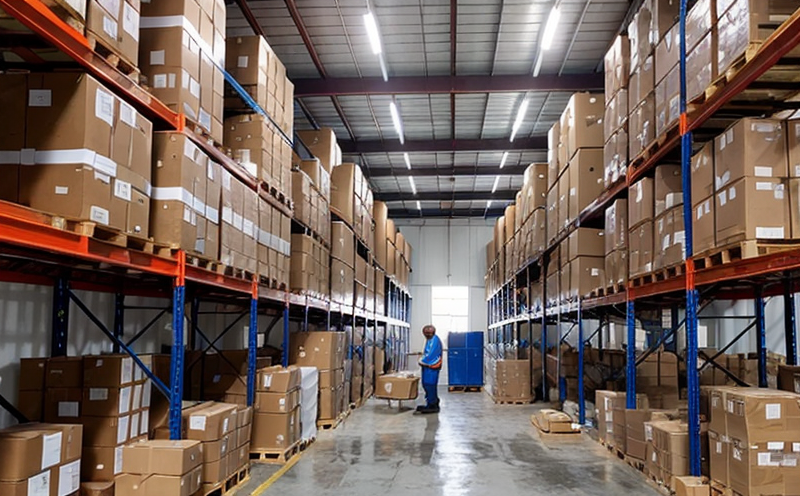Inventory verification inspection
Inventory verification inspections are critical components of inventory management and quality assurance processes. These inspections ensure that the physical quantities of products in stock match with the recorded data, thereby maintaining operational efficiency and compliance with regulatory standards.
The process involves a detailed examination of stored goods to verify their quantity, condition, and storage environment. It is particularly important for sectors such as manufacturing, retail, logistics, and pharmaceuticals where inventory integrity directly impacts business operations. For instance, in the pharmaceutical industry, accurate inventory verification ensures that expired or damaged products are identified promptly, minimizing risks associated with stockouts or overstocking.
Inventory verification inspections can be conducted at various intervals depending on the specific needs of the organization. Regular inspections help maintain an up-to-date and accurate inventory record, which is essential for effective decision-making processes. This includes reorder levels, production planning, and financial reporting. By ensuring that recorded quantities are in sync with physical stock counts, businesses can optimize their operations and avoid costly errors.
The first step in conducting an inventory verification inspection involves preparing the environment for a thorough audit. This includes securing access to storage areas and ensuring that all personnel involved understand the objectives of the inspection. Proper preparation ensures that the process is conducted efficiently and effectively. During the inspection, items are physically counted and compared against the records.
Accuracy in these inspections is paramount. To achieve this, companies often employ advanced technologies such as automated data capture systems or barcode scanning to ensure precise counts. These tools not only speed up the verification process but also minimize human error. In addition, digital documentation of inventory status provides a reliable audit trail that can be easily accessed and reviewed.
Another critical aspect of inventory verification inspections is the examination of storage conditions. This includes checking for proper temperature control, humidity levels, and general cleanliness in warehouses or other storage facilities. Ensuring optimal conditions helps maintain product quality and extends shelf life, which is particularly important for perishable goods like fresh produce or medications.
Once the inspection is complete, a detailed report is generated that outlines all discrepancies found during the process. This report serves as a valuable tool for identifying areas requiring improvement and implementing corrective actions where necessary. It also provides insights into potential risks associated with current inventory management practices.
Scope and Methodology
| Aspect | Description |
|---|---|
| Physical Inspection | Involves counting and verifying the actual quantity of goods against recorded inventory levels. |
| Storage Condition Assessment | Evaluates environmental factors such as temperature, humidity, and cleanliness to ensure optimal preservation conditions. |
| Data Verification | Compares physical counts with digital records stored in the company’s inventory management system. |
| Documentation | Generates comprehensive reports detailing findings, discrepancies, and recommendations for corrective actions. |
Benefits
Conducting regular inventory verification inspections offers numerous advantages that contribute to overall business efficiency and success. Firstly, it enhances accuracy in stock management by ensuring that recorded quantities accurately reflect actual physical stocks. This reduces discrepancies between book values and actual inventories, thereby improving financial reporting.
Maintains compliance with industry regulations and standards.
Identifies potential risks early on, allowing for timely interventions to prevent issues from escalating into major problems.
Improves operational efficiency by optimizing inventory levels and reducing waste or overstock situations.
Fosters trust among stakeholders including customers, suppliers, and regulatory bodies through transparent and accurate data management practices.
Besides these direct benefits, effective inventory verification inspections also play a crucial role in enhancing customer satisfaction. Accurate stock levels ensure that products are available when needed, thus meeting customer expectations and maintaining good reputation.
Moreover, by identifying potential risks early on, organizations can proactively address them before they lead to significant losses or disruptions. This proactive approach not only mitigates financial impacts but also strengthens organizational resilience against unforeseen challenges.
Environmental and Sustainability Contributions
Reduces waste by identifying obsolete or expired products early in the process, preventing them from being used unnecessarily.
Promotes efficient use of resources through optimized inventory levels, reducing excess production and minimizing energy consumption associated with unnecessary stock.
Maintains product quality and integrity, ensuring that only safe and high-quality items are distributed to customers or end-users.
Supports sustainable procurement practices by helping organizations make informed decisions about suppliers based on their compliance records and environmental performance.
The commitment to sustainability is further reinforced through transparent communication channels established between internal teams responsible for inventory management and external partners such as customers, distributors, and regulatory authorities. Such openness fosters a culture of responsibility within the organization while promoting trust among stakeholders.





